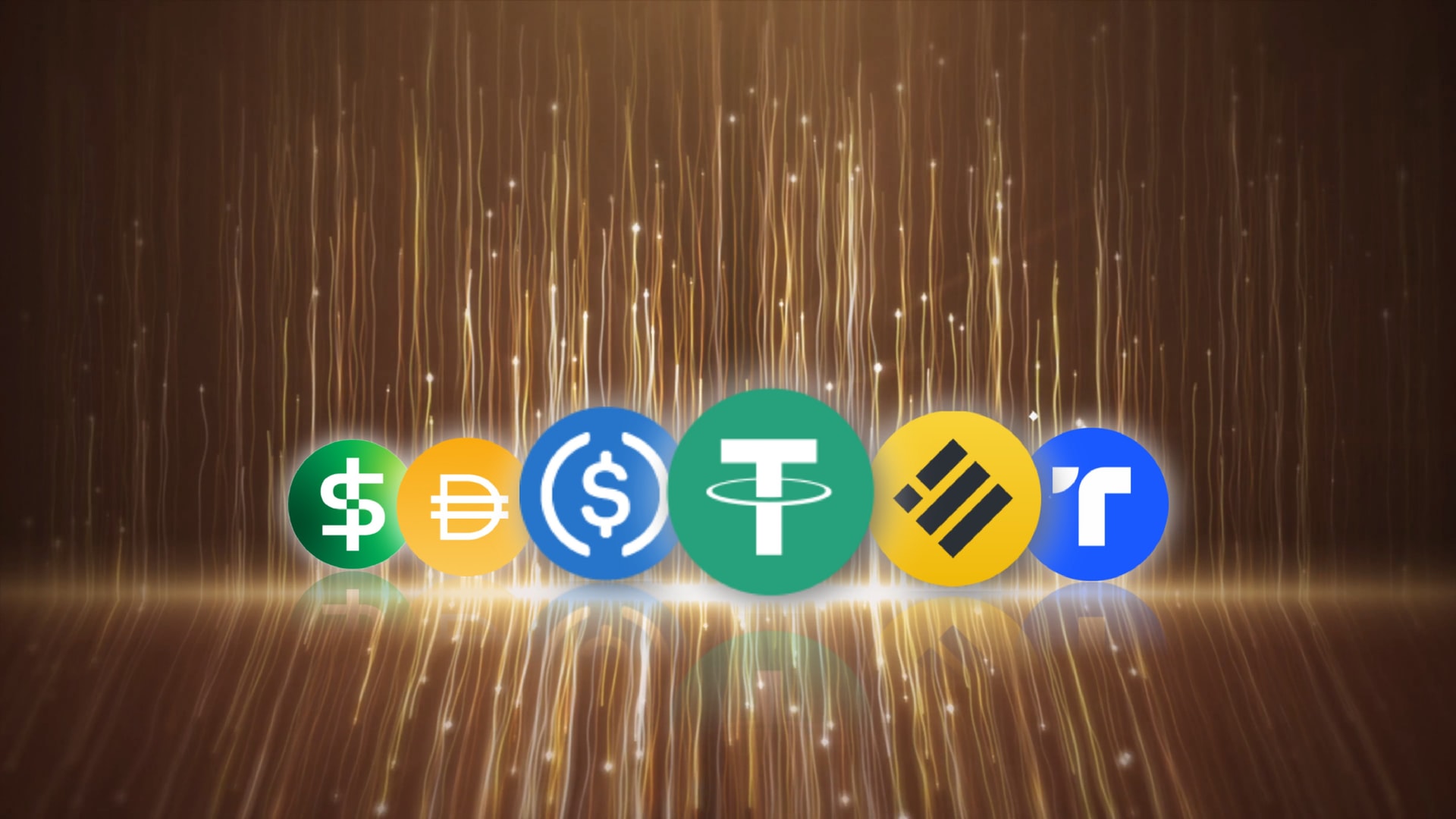
Der Markt für Kryptowährungen erlebte im Mai 2022 eine der schwierigsten Zeiten in seiner kurzen Geschichte. Terra (LUNA) und Terra USD (UST) - zwei der größten Kryptowährungen mit einem Gesamtwert von über $80 Mrd. - sind zusammengebrochen. Der Ansteckungseffekt führte dazu, dass Milliarden von Dollar vom Kryptomarkt vernichtet wurden und mehrere Kryptounternehmen, die in diesen Kryptoanlagen engagiert waren, in Konkurs gingen. Obwohl bereits viel über dieses Ereignis geschrieben wurde, wird dieser Artikel Ihr Wissen über den Zusammenbruch von Luna und UST erweitern, erklären, wie algorithmische Stablecoins funktionieren und warum bisher keine der algorithmischen Stablecoins erfolgreich war.
Der Zusammenbruch von Luna und UST: So ist es passiert
Vor dem Absturz war Do Kwon, der Gründer von Luna, bereits sehr optimistisch über die Zukunft von Terra. Dies hielt jedoch nicht allzu lange an, da die Schwachstelle des algorithmischen Stablecoin-Modells von Terra schnell aufgedeckt wurde und das Ende des Unternehmens zur Folge hatte.
Wie hat TerraUSD funktioniert?
Um zu verstehen, was während des Zusammenbruchs geschah, muss man wissen, wie Luna (LUNA) und TerraUSD (UST) funktionieren.
Luna ist die native Kryptowährung der Terra-Blockchain. Das Terra-Protokoll hat den fiat-pegged Stablecoin Terra USD (UST) geschaffen, um eine stabile Währung mit Zensurresistenz für schnelle Zahlungsabwicklungen auf der ganzen Welt zu bieten.
Luna als native Währung dieser Blockchain ermöglichte es den Inhabern, sich an der Verwaltung der Terra-Blockchain zu beteiligen, was es zu einem Governance-Token machte. Der Hauptzweck war jedoch die Verwaltung des UST-Preises als Teil des algorithmischen Preisstabilitätsmechanismus des Stablecoins.
Das heißt, wenn die Nachfrage nach UST steigt (und ihr Wert einen US-Dollar übersteigt), werden LUNA-Münzen gebrannt, um mehr UST zu prägen. Umgekehrt wird, wenn die Nachfrage nach UST sinkt, LUNA geprägt und UST verbrannt, um die Bindung des Stablecoins aufrechtzuerhalten.
Um die Akzeptanz von UST zu fördern, schuf das Terra-Ökosystem ein Protokoll namens Anchor Protocol, das etwa 20% APY bot, wenn man UST auf der Plattform einzahlte. Dies wurde die Achillesferse des Ökosystems.
Wie sich die Ereignisse entwickelten
Die ersten Anzeichen gab es im Februar, als die Reserven von Anchor zu versiegen begannen. Dies geschah, weil mehr Leute Geld einzahlten, um Zinsen zu verdienen, als dass sie Kredite über das Protokoll vergaben. Die Luna Foundation Guard (LFG) war gezwungen, Anchor zu helfen und es zu versorgen. mit $450 Millionen um sicherzustellen, dass die Plattform weiterhin Menschen zum Kauf und zur Einzahlung von UST anziehen kann. Die Stiftung begann auch mit dem Kauf von Bitcoin (BTC) als Reserve zur Verteidigung des UST-Stiftes.
Einige Monate später, als die LFG sich anschickte, einen 4-Pool auf Curve Finance einzurichten, zogen sie $150 Millionen aus dem 3-Pool von Curve Finance ab. Ein paar Minuten später wurde eine Wallet-Adresse entwässert $350 Millionen UST aus dem Curve 3-Pool. Dies führte zu einer leichten Abschwächung der UST auf etwa $0,972. Gleichzeitig wurde UST in erheblichem Umfang aus dem Ankerprotokoll herausgenommen. Danach begannen Gerüchte, Panik und Zweifel an dem Projekt zu wachsen.
Daraufhin startete die LFG eine Rettungsaktion zur Wiederherstellung des Pfands. Sie begann damit, ihre BTC-Bestände zu verkaufen, um UST zu kaufen und die Bindung zu verteidigen. Es kam jedoch auch zu einem massiven Ausverkauf von UST (möglicherweise durch einen Angreifer). Auch die Einlagen im Anchor-Protokoll wurden weiter abgebaut, da sich die Menschen aus Angst zurückzogen. Als die Leute sich zurückzogen, verkauften sie auch UST, was zu einem noch größeren Verkaufsdruck führte.
Da die Menschen die UST verkauften, ohne dass genügend Nachfrage bestand, druckte das Terra-Protokoll immer mehr LUNA. Außerdem führte die massive Panik zu einem enormen Verkaufsdruck auf Luna selbst, da die Menschen in Sicherheit flüchteten. Letztendlich bedeutete dies eine Todesspirale, von der sich das Terra-Ökosystem nicht mehr erholen konnte und die auch andere Kryptowährungen zum Absturz brachte.
Warum UST zum Scheitern verurteilt war
Einige Kritiker wiesen eine Zeit lang auf die Schwächen des Terra-Ökosystems hin, bevor es zusammenbrach. Der Kern der Kritik war die Tatsache, dass sich der Stablecoin zu sehr auf den einzigen Anwendungsfall des Anchor-Protokolls verließ, um einen ansprechenden APY auf UST-Einlagen zu bieten, der nicht nachhaltig war.
UST wurde auch durch eine volatile Kryptowährung, Luna, unterstützt, die noch keine bewährte Kryptowährung war.
Der Mechanismus der UST funktionierte im Falle des Stablecoin-Depegs wie vorgesehen, was bedeutete, dass Lunas Gesamtangebot sprunghaft angestiegen von 725 Millionen Token auf etwa 7 Milliarden, aber Luna verlor im gleichen Zeitraum 99,9% seines Wertes.
Ohne viel Anwendungsfall für UST, abgesehen davon, dass UST-Inhabern ein unhaltbarer 20% APY angeboten wird, war es immer eine Sorge, dass ein wenig Hysterie zum Dumping des Stablecoins führen könnte. Im Gegenzug würde die Kryptowährung, die ihn stützt, nicht in der Lage sein, ihn stabil zu halten.
Was sind Algorithmic Stablecoins und wie funktionieren sie?
Stablecoins sind Kryptowährungen, die ihren Wert im Verhältnis zu einem anderen Vermögenswert behalten sollen. Am gebräuchlichsten sind Dollar-Stablecoins, die im Verhältnis 1:1 an den US-Dollar gekoppelt und durch denselben Vermögenswert besichert sind. Sie werden in der Regel als Absicherung gegen die Volatilität auf dem Kryptomarkt verwendet. Außerdem werden sie als Handelskapital und als Mittel für digitale grenzüberschreitende Zahlungen verwendet.
Algorithmische Stablecoins sind eine Art von Stablecoins, die nicht durch Vermögenswerte besichert sind. Stattdessen verwenden sie Algorithmen, d. h. spezifische mathematische Regeln, um die Stabilität der Münze zu verwalten. Diese Algorithmen sind oft so konzipiert, dass sie Händler dynamisch dafür belohnen, dass sie den Preis um seine Schwelle stabilisieren.
Obwohl es verschiedene Arten von algorithmischen Stablecoins gibt, die unterschiedlich funktionieren, werden sie im Allgemeinen alle durch Regeln und Anweisungen angetrieben, die in einem Smart Contract geschrieben sind. Der Smart Contract ist in der Regel öffentlich zugänglich und kann von jedem eingesehen werden.
Algorithmische Stablecoins weisen den Smart Contract an, in Abhängigkeit von der Preisabweichung der Münze von ihrer $1-Bindung Münzen zu prägen oder aus dem Umlauf zu nehmen. Wenn der Preis über $1 steigt, werden Münzen geprägt, und wenn der Preis fällt, werden Münzen verbrannt.
Algorithmische vs. besicherte Stablecoins
Algorithmische Stablecoins sind in der Regel nicht durch einen anderen Vermögenswert abgesichert, sondern nutzen einen "Burn and Mint"-Mechanismus, um die Preisstabilität zu gewährleisten. Ein besicherter Stablecoin hingegen wird geprägt oder verbrannt, wenn der besicherte Vermögenswert aus den Protokollreserven eingezahlt oder entnommen wird. Sie sind also durch Vermögenswerte abgesichert, die die Preisstabilität gewährleisten sollen.
Ein Beispiel hierfür ist der DAI, der an den US-Dollar gekoppelt ist. Er wird durch eine Mischung aus mehreren anderen Kryptowährungen besichert, wie Ethereum, Wrapped Bitcoin, und USDC. Diese Kryptowährungen werden jedes Mal, wenn ein neues DAI geprägt wird, in die Smart-Contract-Reserven eingezahlt.
Zu den anderen besicherten Stablecoins gehören USDT, USDC und BUSD, die durch US-Dollar besichert sind. Allerdings werden Stablecoins, die mit traditionellen Vermögenswerten besichert sind, im Gegensatz zu DAI von zentralisierten Unternehmen verwaltet.
Die DAI wurde früher nur durch Ether (ETH) und gilt als vollständig dezentralisierter Stablecoin. Vor ein paar Jahren bestand jedoch die Gefahr, dass er seine Bindung an den USD durch den Absturz des ETH-Preises vollständig verliert. Infolgedessen beschloss sie, andere Münzen wie USDC, eine zentralisierte Stablecoin, zu ihren Sicherheiten hinzuzufügen.
Doch auch besicherte Stablecoins sind nicht ohne Nachteile. Der zentrale Charakter der in Dollar denominierten Sicherheiten, die bei regulierten Finanzinstituten gehalten werden, macht Stablecoins anfällig für regulatorische und Compliance-Risiken. Infolgedessen können sie leicht von den Behörden kontrolliert oder beeinflusst werden.
Zum Beispiel, USDC-Emittent Sanktionierte Wallet-Adressen auf der schwarzen Liste von Circle von Nutzern, die den Tornado-Cash-Mixing-Dienst in Anspruch genommen haben, und fror die in diesen Geldbörsen befindlichen Gelder ein.
Stablecoin Anwendungsfälle

Überweisung
Der internationale Geldtransfer ist in der Regel mit hohen Gebühren verbunden und kann Tage dauern. Stablecoins senken die Gebühren für internationale Überweisungen und ermöglichen es Menschen und Unternehmen, Geld innerhalb von Minuten grenzüberschreitend zu überweisen.
Zahlungen
Zahlungen sind einer der offensichtlichen Anwendungsfälle für Stablecoins. Unternehmen können auf die Gebühren verzichten, die bei herkömmlichen Zahlungsmethoden und Unternehmen, die als Vermittler auftreten, anfallen.
Gigworker und Freiberufler können Zahlungen problemlos von überall auf der Welt erhalten. Zum Beispiel kann ein Unternehmen im Vereinigten Königreich einen Auftragnehmer aus Nigeria einstellen und in Stablecoins bezahlen.
Handelskapital
Einer der vorherrschenden Anwendungsfälle von Stablecoins ist derzeit die Verwendung als Handelskapital. Die meisten Krypto-Börsen verwenden Stablecoins wie USDT als Basiswährung für den Handel mit Paaren. Fiat-On- und Off-Ramps sind in der Regel kostspielig und langsam. Mit Stablecoins können Krypto-Händler jedoch nahtlos in Positionen von und zu einem Fiat-Äquivalent ein- und aussteigen.
Infolgedessen ist Tether USDT (USDT) einer der größte Kryptowährungen nach Volumen da sie die führende Basiswährung für Krypto-Handelspaare an Börsen und im OTC-Markt geworden ist.
Sicherer Hafen Vermögenswert
Stablecoins haben einen stabilen Wert, was bedeutet, dass sie für Länder mit volatilen Währungen ideal sein können. Im Allgemeinen sollten Stablecoins ein gutes Wertaufbewahrungsmittel sein. Und da sie auf der Blockchain funktionieren, können die Menschen ihr Vermögen im Falle unbeständiger Regierungsverwaltungen selbst verwahren.
Warum Krypto einen dezentralen Stablecoin braucht
Während der Zusammenbruch von TerraUST die inhärenten Fehler des aktuellen Modells der algorithmischen Stablecoins aufgezeigt hat, braucht der Markt einen robusten, preisstabilen dezentralen Stablecoin, damit das dezentrale Finanzwesen (DeFi) wirklich gedeihen kann.
Zentralisierte Stablecoins können leicht von den Behörden kontrolliert oder beeinflusst werden, wie die Sperrung der USDC-Wallets von TornadoCash-Benutzern durch Circle zeigt, was sie für eine wirklich globale, dezentrale digitale Wirtschaft ungeeignet macht.
Ohne einen dezentralisierten Stablecoin wird der DeFi-Markt niemals wirklich dezentralisiert und autonom werden.
Terra war ein Experiment, aus dem das gesamte Krypto-Ökosystem eine Menge lernen kann. Auch wenn dieses Experiment gescheitert ist, muss die Branche einen Stablecoin entwickeln, der völlig unabhängig von der bestehenden Fiat-Infrastruktur ist.
Dies ist wichtig für das weitere rasche Wachstum des DeFi-Marktes, da er sich so zu einer sich selbst tragenden Finanzwirtschaft entwickeln kann. Im Kern brauchen die DeFi-Märkte eine stabile Währung, die nicht von den Launen der Zentralbanken oder Regierungen abhängt.
Über DDA Ikonische Fonds
Iconic Funds ist die Brücke zu Krypto-Investitionen durch vertrauenswürdige Anlageinstrumente. Wir bieten Anlegern sowohl passive als auch Alpha-Strategien für Kryptowährungen sowie Risikokapitalmöglichkeiten.
Wir liefern hervorragende Leistungen durch vertraute, regulierte Vehikel, die den Anlegern die Qualitätsgarantien bieten, die sie von einem erstklassigen Vermögensverwalter erwarten, während wir unsere Mission verfolgen, die Verbreitung von Kryptoanlagen voranzutreiben.
Aktuelle Nachrichten und Artikel
- Das Argument für aktiv verwaltete Anlagestrategien auf den Kryptomärkten
- Iconic startet aktiv verwaltete Krypto-Anlageplattform mit dem kürzlich erworbenen Quantitative Solutions Team
- Wie man in NFTs investiert: Ein Leitfaden für professionelle Anleger
- Bitcoin vs. Gold: Warum Sie wahrscheinlich besser dran sind, wenn Sie "digitales Gold" kaufen
- Warum die Volatilität von Bitcoin Sie nicht erschrecken sollte
- Wie genau ist das Bitcoin Stock-to-Flow-Modell?
Iconic in der Presse
- ETF-Stream: Zahl der White-Label-Emittenten in Europa innerhalb einer Woche verdreifacht
- ETF-Strategie: Iconic Funds lanciert das weltweit erste Krypto-ETP auf ApeCoin
- Das Investment: Kryptowährungen kommen 2022 im Mainstream an
- Private Banking Magazin, Bitcoin - das perfekte Beispiel für ein ESG-Investment?
- Institutionelles Geld, Krypto-Manager steigt bei Family Office ein
- Morningstar, Iconic Funds erweitert seine Produktpalette mit einem physischen Ethereum-ETP
Aktuelle Forschungsberichte

Wie haben sich die Portfolios während der Pandemie entwickelt? ➡ Hier herunterladen
Analyse der wichtigsten Werttreiber der führenden Kryptowährungen ➡ Hier herunterladen
Wie effektiv sind gängige Anlagestrategien mit Bitcoin? ➡ Hier herunterladen
Untersuchung des Mythos der Nullkorrelation zwischen Kryptowährungen und Marktindizes ➡ Hier herunterladen
Weitere Informationen finden Sie unter deutschedastg
Haftungsausschluss
Die in diesem Artikel enthaltenen Materialien und Informationen dienen ausschließlich zu Informationszwecken. Die Iconic Holding GmbH, ihre verbundenen Unternehmen und Tochtergesellschaften fordern nicht zu Handlungen auf der Grundlage dieses Materials auf. Dieser Artikel ist weder eine Anlageberatung noch eine Empfehlung oder Aufforderung zum Kauf von Wertpapieren. Die Wertentwicklung ist unvorhersehbar. Die Wertentwicklung in der Vergangenheit ist daher kein Hinweis auf die zukünftige Wertentwicklung. Sie erklären sich damit einverstanden, Ihre eigenen Nachforschungen anzustellen und Ihre Sorgfaltspflicht zu erfüllen, bevor Sie eine Anlageentscheidung in Bezug auf die hier besprochenen Wertpapiere oder Anlagemöglichkeiten treffen. Unsere Artikel und Berichte enthalten zukunftsgerichtete Aussagen, Schätzungen, Projektionen und Meinungen. Diese können sich als wesentlich ungenau erweisen und unterliegen erheblichen Risiken und Unwägbarkeiten, die außerhalb der Kontrolle der Iconic Holding GmbH liegen. Wir gehen davon aus, dass alle hierin enthaltenen Informationen korrekt und zuverlässig sind und aus öffentlichen Quellen stammen. Diese Informationen werden jedoch "wie besehen" und ohne jegliche Garantie präsentiert.














